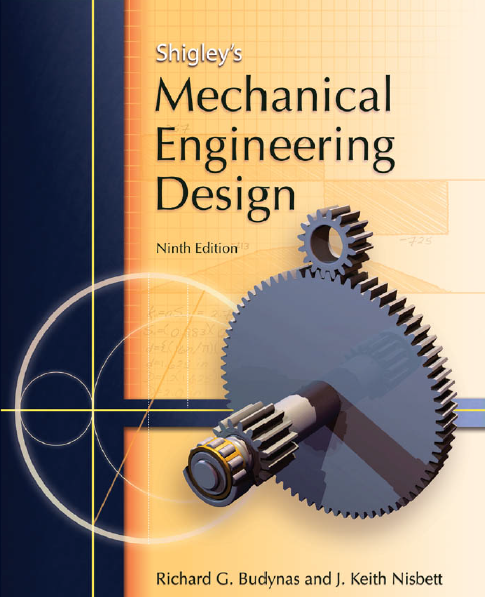Mechanical Engineering: 5 Important Courses and Their Content
Mechanical Engineering is one of the most important and versatile disciplines of engineering. It deals with the design, analysis, fabrication, manufacturing and maintenance of mechanical systems (anything that moves or generates power constitutes a mechanical system). Mechanical Engineering is of fundamental importance in the fields related to science, technology, renewable energy, space exploration, manufacturing industry, power generation and aerospace industry.
What do mechanical engineers do?
Let's be a bit optimistic and start with more attractive career options. Mechanical engineers can become astronauts in a space agency. Or they can design fancy stuff like aeroplanes, space shuttles, sports cars and the list goes on. But, realistically speaking, generally, mechanical engineers design, manufacture, maintain and control mechanical systems in order to optimize them to obtain highly efficient performance.
But in order to do all the above-mentioned fun stuff; first, you have to become a Mechanical Engineer. Mechanical engineering is a very vast and diverse field which includes the study of more than 40 subjects spanned in 4 years bachelors’ degree.
Title and content of these courses may vary depending upon the institution in which a student is studying but core concepts of these courses remain unchanged. This article is an attempt to highlight the content of five important courses in Mechanical Engineering.
Engineering Statics
This course enables students to find the resultant of multiple forces, moments, torques and couples acting on a body. This course focuses on the study of objects which are in static equilibrium.
In order to develop a basic understanding of vector resolution, in the initial chapters of the coarse resolution of forces and moments is carried out in two dimensions. As the course progresses, three-dimensional problems, complex and real-life numerical problems are introduced in the intermediate sections of the course.
The most important part of this course is the study of structures (mostly trusses) and resolution of forces acting on a body on different components in order to find the impact of forces in specified directions. Moments and couples acting on a body in two and three dimensions are also studied in detail. Different methods to analyze loads acting on various components of a structure are also studied. These methods include methods of sections and method of joints.
Types and applications of frictional forces are also studied in this subject.
This course provides basic concepts and lays the foundation for the advanced courses to follow. In most of the universities, this course is placed in the first two semesters of engineering.

Engineering Dynamics
This course enables students to study and analyze the motion of a body. This course also outlines various ways to analyze and characterize the motion of a body.
This course deals with the study of the objects which are accelerating under the action of a force. This subject is divided into the study of the motion of particles and rigid bodies. Kinetics and Kinematics of particles and plane kinematics of rigid bodies are studied in this course. This course is divided into two main parts:
Dynamic of Particles:
This section provides a simplified approach towards the analysis and solution of moving objects:
I) Kinematics: In this section, the motion of objects is analyzed and solutions are obtained without considering force in the calculations. Various types of motion of particles are studied in this subject.
Typically, rectilinear, plane curvilinear and space curvilinear motion of particles is studied. All these motion of particles are analyzed in rectangular, normal and tangential and polar coordinates.
II) Kinetics: In this section, force is also embedded into calculations while analyzing the motion of a particle. Co-relations between force, mass and acceleration are studied using equations of motion. Above mentioned parameters and co-relations are used for rectilinear and curvilinear motion,
III) Additionally, in order to understand the dynamics of particles undergoing complex motion; different methods including impulse momentum relations, work and kinetic energy, conservation of energy and momentum are also covered in detail.
Dynamics of Rigid Bodies:
In later sections of the course, simplified cases studied in the kinetics and kinematics of particles are applied on the plane kinematics and kinetics of rigid bodies. This part of the course provides a solution to most of the complex real-life numerical problems about the rigid bodies.
Rotation, relative velocity and acceleration are studied in the plane kinematics of rigid bodies section. Absolute motion of rigid bodies is also analyzed in this section.
In the final chapters, plane kinetics of rigid bodies are studied. This section includes equations of motion, fair translation, and fixed axes rotation of rigid bodies. Impulse-momentum relations and general plane motions are also discussed in detail.
Mechanics of Materials
This course is one of the most important courses of mechanical engineering as it enables the students to predict the behaviour of an object upon the application of force.
In the beginning chapters, objects subjected to axial loading are studied. The main purpose is to study stresses and strains in these objects. In order to get a basic understanding, normal and shearing stresses are calculated. Deformation of objects, when subjected to force, is also studied. This course also includes the analysis of elastic and plastic deformation of objects when subjected to any form of force. Afterwards, in order to develop understanding about complex problems; stresses on oblique planes are also calculated.
Elastic and Plastic behaviour in stress-strain diagrams of Hooke’s law is also studied. The behaviour of an object when subjected to high-temperature changes, the concept of Poisson’s ratio and shearing strain are also studied.
In succeeding sections, complex objects like shafts and beams are explained to students. In order to study these objects, concepts of torque and pure bending are introduced. While studying torsion the concepts of stresses, deformations and angle of twist inelastic ranges is studied.
While studying beams, students learn to draw shear and bending-moment diagrams. These diagrams allow the students to study the relation between load, shear and bending moment. This, in turn, enables students to design beams while accounting for above-mentioned parameters.
In final sections of this course, students learn the transformation of stress and strain on particular planes. In this section, techniques are analyzed to calculate principal stresses and maximum shear stresses. Generally, Mohr Circle is used to calculate principal stresses and maximum shearing stresses. Failure criterion for ductile and brittle materials and transformation of plane strain are also studied.
Thermodynamics
This course provides the fundamental and basic understanding of all systems in which heat energy and work are being inter-converted to one another. It deals with the interrelationship between heat, temperature and work. Therefore, this subject is particularly important in the study of various types of engines.
First law of thermodynamics and the second law of thermodynamics are the building blocks of this subject and they help to relate above mentioned parameters.
In the beginning chapters, this subject provides an introduction to the basic concepts like entropy, enthalpy, efficiency, conservation of mass and energy and control volumes.
Different techniques to analyze thermodynamic systems are also explained in detail.
In advanced sections of this course; vapour power system, gas power systems and refrigeration systems are studied to apply the above-mentioned concepts. The basic and simplified working principle of the heat engines is studied in this course. The efficiency of these heat engines is studied in detail and methods to enhance the efficiency of thermodynamic systems are also studied in detail.

Machine Design
This course enables students to design various machine components and then analyze the designed components using various tools.
In the introductory chapters, students learn basic concepts regarding load, stress, deflection and stiffness. While designing a component; static, dynamic and fatigue loading on a body is considered carefully. Afterwards, students learn to design non-permanent and permanent joints. Design of non-permanent joints includes the design of screws and fasteners. The design of permanent joints includes techniques like welding and bonding. Students also learn to design machine components like springs, bearings and gears.
In the second section of this course, students learn to analyze a designed component to check for the authenticity and reliability of the design. Various kinematics techniques, force analysis, failure theories and stress analysis are used for this purpose. These techniques also enable students to design spur, helical, bevel and worm gears, various types of bearings, springs, belts and chains.
This course also provides an introduction to experimental stress analysis techniques and finite element analysis.
Other important courses include but are not limited to:
Engineering Materials, Control Engineering, Fluid Mechanics, Instrumentation and Measurement, Refrigeration and Air Conditioning, I.C. Engines
If you think that any of the scientific terms mentioned in this article need further explanation or clarification, please mention it in the comments section.
.
© 2018 Fawad ul Hassan








